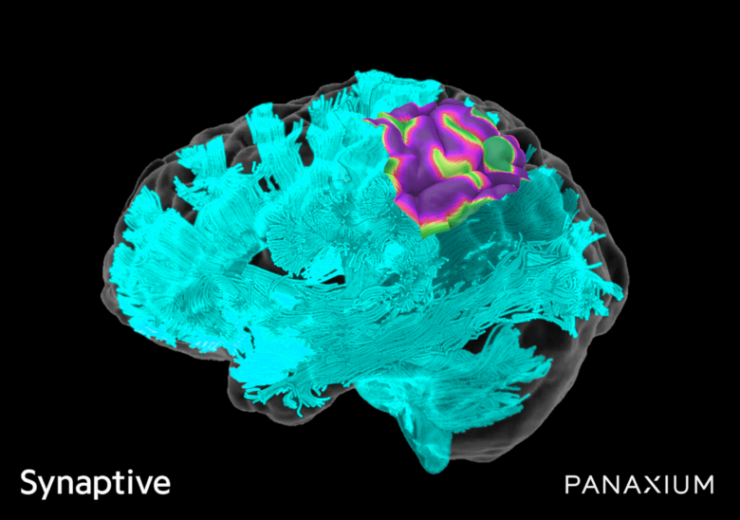The integration of Panaxium’s cortical electrodes array into Synaptive Modus V robotic exoscope technology is expected to help in the real-time mapping of details of bioelectrical connections in the human brain during surgeries

A picture of the overlay of white matter tractography and micro-precision electrocorticography. (Credit: GlobeNewswire, Inc./Synaptive Medical)
Synaptive Medical has entered into a joint-development partnership with bioelectronic medicine company Panaxium to integrate the latter’s iontronic electrocorticography (ECoG) platform into its Modus V robotic exoscope technology.
This integration is said to offer real-time intelligence on bioelectrical connections as well as decisive functional mapping information during procedures. It will preserve crucial brain tissues during resection, shorten procedure times, and enhance post-surgery outcomes, Synaptive Medical said.
Synaptive Medical president and co-founder Cameron Piron said: “Synaptive is proud to launch this research effort with extraordinary clinical partners advancing state-of-the-art in neurology and neurosurgery at renowned centres worldwide.
“Synaptive already provides automated tractography segmentation for surgical planning with our imaging system, so the integration of Panaxium’s electrocorticography into Modus V is a natural next step for our technology and an exciting leap forward in the neurosurgical space.”
An upcoming pilot trial at hospitals in Paris, France, sponsored by INSERM, the French National Institute of Health and Medical Research, will be used for showcasing the advantages of the integration.
Additionally, Panaxium is commercialising its iontronic interfaces for use in monitoring and therapeutic neurostimulation applications. These include tumour excision surgeries and stroke recovery therapies including artificial intelligence (AI) assisted software for procedures.
Panaxium co-founder and chief product officer Pierre Leleux said: “This tool provides a level of electrophysiology information that has never been accessible during procedures before.
“The extraordinary and unprecedented data we are collecting then enables software intelligence for an expanding range of procedures that would benefit from cortical mapping, including neuropsychiatric, neuro-oncology, and neurodegenerative.”
